Extreme Reservoir
Siltation
: a Case study
Rapid reservoir sedimentation
in Australia
by Professor Hubert CHANSON (h.chanson@uq.edu.au)
and D.Patrick JAMES
M.E., ENSHM Grenoble, INSTN, PhD (Cant.), DEng (Qld),
Eur.Ing., MIEAust., MIAHR, 13th Arthur
Ippen awardee
Dept. of Civil Engrg., Univ. of Queensland, Brisbane
QLD 4072, Autralia
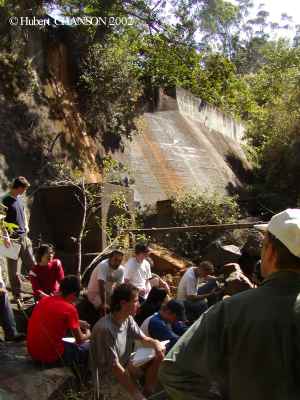 Several
Australian dams failed slowly because of reservoir siltation, although
the authorities do not acknowledge it. The writer investigated
reservoir
siltation cases (e.g. CHANSON 1998, CHANSON and
JAMES
1998a,b). Between 1890 and 1960, numerous dams became fully-silted,
mostly in New South Wale (Fig. 1 and 2).
Koorawatha
dam (Fig. 1) was the second arch dam built
at
the same site. Both structures became fully-silted by bed-load
material.
The siltation of Cunningham Creek dam (Fig. 2)
was well-documented by HELLSTRÖM (1941)
(suspension sedimentation predominantly). Some reservoirs became
fully-silted
in less than 20 years, and their failure affected the local
economy.
A list of over 30 rapid reservoir siltation events was compiled (CHANSON
and JAMES 1998b). It includes town water supply reservoirs (e.g.
Moore
Creek dam), railway dams (e.g. Gap weir) and mining reservoirs (e.g.
Junction
Reefs).
Several
Australian dams failed slowly because of reservoir siltation, although
the authorities do not acknowledge it. The writer investigated
reservoir
siltation cases (e.g. CHANSON 1998, CHANSON and
JAMES
1998a,b). Between 1890 and 1960, numerous dams became fully-silted,
mostly in New South Wale (Fig. 1 and 2).
Koorawatha
dam (Fig. 1) was the second arch dam built
at
the same site. Both structures became fully-silted by bed-load
material.
The siltation of Cunningham Creek dam (Fig. 2)
was well-documented by HELLSTRÖM (1941)
(suspension sedimentation predominantly). Some reservoirs became
fully-silted
in less than 20 years, and their failure affected the local
economy.
A list of over 30 rapid reservoir siltation events was compiled (CHANSON
and JAMES 1998b). It includes town water supply reservoirs (e.g.
Moore
Creek dam), railway dams (e.g. Gap weir) and mining reservoirs (e.g.
Junction
Reefs).
Hydrology of the Australian continent
Australia is a large continent (7,690 E+3 km2) of low relief. Its most
prominent topographic feature is the Great Dividing Range, a chain of
low
mountains and tablelands extending over 2,500 km along the Eastern and
South-Eastern coastlines. Although the average annual rainfall is about
420 mm, the spatial and temporal variability is high. The rainfall may
vary from zero for several years during droughts to extreme
hydrological
events (e.g. 515 mm in 6 hours at Dapto NSW, in 1984). The average
runoff
is only 13% of the rainfall, varying from 0 mm in most Western
Australia
to over 700 mm in some regions of Eastern Australia and Tasmania.
Indeed
evaporation is high. Average annual standard pan evaporation exceeds
1,000
mm in nearly all parts of the continent, with extreme evaporation above
3,000 mm in Central Australia. High evaporation coupled with the
variability
of surface runoff make conservation and development of surface water
resources
more expensive, less effective and more political than in many
countries.
Comparison between Australian and overseas siltation rates
The analysis of (well-documented) extreme siltation events in Australia
suggests that sedimentation rates in Australia were high (CHANSON
and JAMES 1999, CHANSON 1998). The siltation of Quipolly reservoir
No. 1 between 1941-1943 was an extraordinary event : i.e., the
sedimentation
rate was in excess of 1,140 m3/km2/year. The Korrumbyn Creek dam
sedimentation
was very rapid : i.e., less than 7 years ! The site selection was
improper
(CHANSON and JAMES 1998a,c). Overall
sedimentation
problems were experienced mostly with small to medium size reservoirs :
i.e., catchment area less than 100 km2 typically.
In contrast large reservoirs have not been sedimenting rapidly at the
exception
of Melton, Eppalock and Eildon reservoirs, all in Victoria. Heavy
siltation
at Eildon was experienced in 1940 during torrential rainfalls,
following
bushfires which destroyed more than 50% of the catchment forest. At
Eppalock,
the catchment was affected by extensive gold mining, tree clearing and
hydraulic mining during the period 1851-1890, and rabbit infestation
was
another problem.
Since the 1950s, lower siltation rates have been experienced on the
Australia continent. The decrease in reservoir sedimentation is related
to the introduction of new farming techniques, new land conservation
practices
and an awareness of soil erosion problems. The trend is characteristic
in New South Wales, Victoria, South Australia and Queensland. Note that
most extreme (recorded) siltation rates were observed during short
duration
studies (1 to 10 years) and there is no information on long-term
siltation
(over 70 years).
Fully-silted reservoirs are potential hazards. During a large flood
event (e.g. PMF), the sediment weight adds to he wall compression
stress
and the safety factor (ratio of concrete strength to load) could become
less than two (CHANSON and JAMES 1999). With
concrete structures, the properties of the wall must be tested in-situ
and a proper analysis of the reservoir catchment and dam wall should be
conducted for each individual structure.
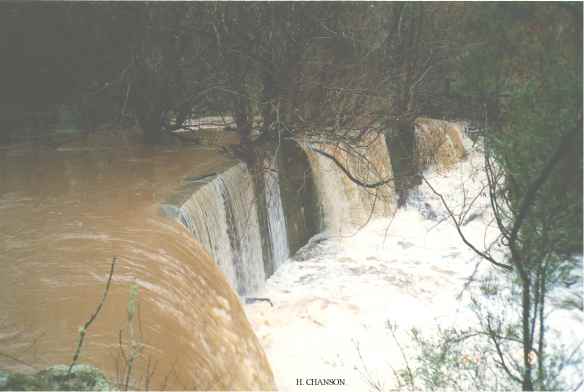
Summary
The main findings of the study are : [1] reservoir sedimentation has
been a serious problem in Australia, [2] Australian engineers could
draw
upon local and overseas experience, and from past failures, [3]
reservoir
siltation affects the dam safety, creating high loads on the dam wall.
Several reservoirs became fully-silted because the designers did not
take
into account correctly the soil erosion and sediment transport
processes,
and no soil conservation practice was introduced.Today the society
expects
the useful life of a reservoir to be more over 30 to 50 years. One
lesson
from past experience is the need to consider the dam, the reservoir and
the catchment as a complete system which cannot be dissociated. Soil
erosion
and water runoff lead into the streams some sediment material that is
trapped
downstream by the dam wall. A total catchment management policy must be
considered from the early stage of a reservoir design.
Fully-silted reservoirs stand as a source of embarrassment for the
scientists and the public. Each reservoir failure must be a valuable
teaching
and pedagogic tool to heighten the awareness of students, professionals
and local authorities and of the public. Society must learn from its
mistakes,
not to repeat them again!
Detailed photographs
Photo
No.
1 : Koorawatha dams (1901, 1911) : fully-silted concrete arch dams
built for railway water supply (Australia).
Photo No. 2 : De Burgh dam (NSW,
Australia 1908). Named after its designer Ernst de BURGH, it was built
as a water supply for the narrow-gauge railway line connecting
Goondah
NSW to the construction site of the Burrinjuck dam (CHANSON and JAMES
1998b).
Photo
No. 3 : Cunningham Creek dam (1912) :
railway
dam fully-silted in less than 20 years (Harden NSW, Australia).
Photographs No. 4 & 5 : Fully-silted
reservoir of Nishiyawa dam
(Japan,
1957) : H = 39 m, L = 112 m, Res. Cap. = 2.38 Mm3, spillway cap. : 575
m3/s. On the Hayagawa river, the reservoir became fully-silted by
gravel
bed-load in less than 20 years. The reservoir was dredged in the 1990s
down to 2-m to resume hydropower operation. An example of bed load
material
upstream of Nishiyama dam is HERE.
Photographs No. 6 to 15: Fully-silted Korrumbyn reek dam (1917),
Murwillumbah NSA, Australia. Photo
No. 6 : View from downstream on 25 April 1997. Photo
No. 7 : downstream view of the pipeline intake in April 1997. Photo
No. 8 : Korrumbyn Creek downstream of Korrumbyn Creek dam on 18
Aug.
2002. Note the huge bed load material. Photo
No. 9 : Fully-silted reservoir with the dam wall in the background,
on 17 Aug. 2002. Photo No. 10 :
Bed
load material in the delta (upstream end) of the fully-silted reservoir
on 17 Aug. 2002. Photo No. 11 :
dam
wall view from the road on 17 Aug. 2002. Before June 2001, the dam wall
was not visible from the road, although the abutment is less than 10 m
from the bitumen. Major floods in May/June 2001 flattened the
sub-tropical
rainforest occupying the reservoir. Photo
No. 12 : Mount Warning on 18 Aug. 2002. The climb takes about 4
hours.
Photo No. 13 : Korrumbyn Creek,
looking
downstrream during student field trip on 4 Sept. 2002. Photo
No. 14 : Korrumbyn Creek dam during student field trip on 4 Sept.
2002.
Photo No. 15 : Korrumbyn Creek
reservoir,
looking upstream during student field trip on 4 Sept. 2002
References
CHANSON, H. (1998). "Extreme Reservoir Sedimentation in Australia : a
Review." Intl Jl of Sediment Research,
UNESCO-IRTCES, Vol. 13, No. 3, pp. 55-63 (ISSN 1001-6279). (Download
PDF file)
CHANSON, H. (1999). "The
Hydraulics of Open Channel Flows : An Introduction." Edward
Arnold, London, UK, 512 pages (ISBN 0 340 74067 1).
CHANSON, H., and JAMES, D.P. (1999). "Siltation of Australian
Reservoirs : some Observations and Dam Safety Implications." Proc.
28th
IAHR Congress, Graz, Austria, Session B5, 6 pages. (download
PDF
file)
CHANSON, H. (1998). "Extreme Reservoir Sedimentation
in Australia : a Review." International
Journal of
Sediment Research, UNESCO-IRTCES, Vol. 13, No. 3, pp. 55-63
(ISSN 1001-6279). (PDF file
at UQeSpace)
CHANSON, H. (1998b). "Les Barrages
Oubliés de Nouvelles Galles du
Sud." ('The Forgotten Dams in New South Wales.') Annales des Ponts
et Chaussées, Ingénieur Science Société,
No. 86, May, pp. 10-20 (ISSN 0152-9668) (in French). (PDF Version at
EprintsUQ)
CHANSON, H., and JAMES, P. (1998a). "Rapid Reservoir
Sedimentation
of Four Historic Thin Arch Dams in Australia." Jl of Performance of
Constructed Facilities, ASCE, Vol. 12, No. 2, May, pp. 85-92.
Errata
: Vol. 12, No. 3, p.169. (download
PDF
file)
CHANSON, H., and JAMES, D.P. (1998b). "Historical Development
of Arch Dams in Australia : from Advanced Designs to Engineering
Failures."
Research
Report CE 157, Dept. of Civil Engineering, The University of
Queensland,
Brisbane, Australia, August, 133 pages.
CHANSON, H., and JAMES, P. (1998). "Teaching Case Studies in Reservoir
Siltation and Catchment Erosion." Intl Jl of Engineering Education,
Vol.14, No. 4, pp. 265-275 (ISSN 0949-149X). (Download
PDF
file) (Alternative PDF
file)
CHANSON, H., and JAMES, D.P. (1999-2000). "Railway Dams in
Australia
: Six Historical Structures." Trans. Newcomen Society,
Vol. 71, No. 2, pp. 283-303 (ISSN 0372-0187). (PDF Version at
EprintsUQ)
CHANSON, H., and JAMES, D.P. (2002). "Historical Development of Arch
Dams : from Cut-Stone Arches to Modern Concrete Designs." Aust.
Civil Engrg. Trans., IEAust, Vol. CE43, pp. 39-56 & front
cover (ISSN 0819-0259). (Download PDF file) Read more about Arch Dam History .
HELLSTRÖM, B. (1941). "Några Iakttagelser Över
Vittring
Erosion Och Slambildning i Malaya Och Australien." Geografiska
Annaler,
Stockholm, Sweden, No. 1-2, pp. 102-124 (in Swedish).
JAMES, D.P., and CHANSON, H. (2000). "Cement by the
Barrel and Cask." Concrete
in Australia, Vol. 26, No. 3, pp. 10-13 (ISSN1440-656X). (PDF Version at
EprintsUQ)
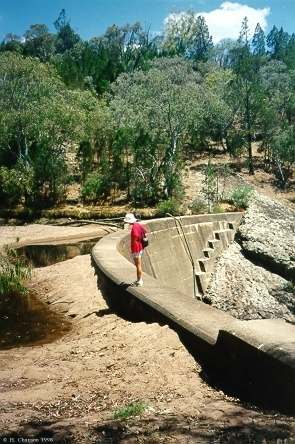 Internet
links
Internet
links
World Commission on Dams {http://www.dams.org/}
World Lake Database, International Lake Environment Commission
Foundations {http://www.ilec.or.jp/database/database.html}
Sab check dams in Japan {http://www.uq.edu.au/~e2hchans/sabo.html}
Acknowledgments
The author acknowledges the help of Mr N. BEDFORD,
Tamworth
NSW; Mr and Mrs J. CHANSON, Paris, France; Ms CHOU Y.H., Brisbane QLD;
Mr and Mrs D. DAVIDSON, Murwillumbah NSW; Dr M.R. GOURLAY, Brisbane
QLD;
Ms C. LITCHFIELD, Inverell NSW; Mr R.A. LITTLEJOHN, Harden-Murrumburrah
Historical Society NSW; Professor C. O'CONNOR, Brisbane QLD; Mr P.
REID,
NSW Dam Safety Committee.
License

This work is licensed under a Creative Commons
Attribution-NonCommercial 3.0 Unported License.
Hubert CHANSON
is a Professor in Civil Engineering,
Hydraulic Engineering and Environmental Fluid Mechanics, at
the University of Queeensland,
Australia. His research interests include design of hydraulic
structures, experimental investigations of two-phase flows, applied
hydrodynamics, hydraulic engineering, water quality modelling,
environmental fluid mechanics, estuarine processes and
natural resources. He has been an active consultant for both
governmental agencies and private organisations. His publication record
includes over 600 international refereed papers and his work was cited
over 3,500 times since 1990. Hubert Chanson is the
author
of several books : "Hydraulic
Design
of
Stepped Cascades, Channels, Weirs and Spillways" (Pergamon, 1995), "Air Bubble Entrainment in Free-Surface
Turbulent Shear Flows" (Academic
Press, 1997), "The Hydraulics of
Open Channel Flow : An Introduction" (Butterworth-Heinemann, 1st
edition 1999, 2nd editon 2004),
"The Hydraulics of Stepped Chutes and
Spillways" (Balkema, 2001), "Environmental Hydraulics of
Open Channel
Flows" (Butterworth-Heinemann,
2004), "Applied
Hydrodynamics: an Introduction of Ideal and Real Fluid Flows" (CRC Press, 2009),
and "Tidal Bores,
Aegir, Eagre, Mascaret, Pororoca: Theory And Observations" (World
Scientific, 2011). He
co-authored two further books "Fluid
Mechanics
for Ecologists" (IPC Press,
2002) and "Fluid Mechanics for Ecologists. Student Edition" (IPC, 2006). His textbook "The
Hydraulics of Open Channel Flows : An
Introduction" has already been translated into Spanish (McGraw-Hill Interamericana)
and Chinese (Hydrology Bureau of Yellow River Conservancy
Committee), and the second
edition was published in 2004. In 2003, the IAHR
presented him with the 13th Arthur Ippen
Award for outstanding
achievements in hydraulic engineering. The American Society of Civil
Engineers, Environmental and Water Resources Institute (ASCE-EWRI)
presented him with the 2004 award for the Best Practice paper in the
Journal of Irrigation and Drainage Engineering ("Energy
Dissipation and Air Entrainment in
Stepped Storm Waterway" by Chanson and Toombes 2002). Hubert
Chanson edited further several books : "Fluvial,
Environmental and
Coastal Developments in Hydraulic
Engineering" (Mossa, Yasuda & Chanson 2004, Balkema), "Hydraulics.
The Next
Wave" (Chanson & Macintosh 2004, Engineers
Australia), "Hydraulic
Structures: a
Challenge to Engineers and Researchers" (Matos & Chanson 2006, The University of Queensland), "Experiences
and Challenges in Sewers:
Measurements and Hydrodynamics" (Larrate & Chanson 2008,
The University of Queensland),
"Hydraulic
Structures: Useful
Water Harvesting Systems or Relics?" (Janssen & Chanson 2010,
The University of Queensland),
"Balance and
Uncertainty: Water in a Changing World" (Valentine et al. 2011, Engineers Australia).
He chaired the Organisation of the 34th
IAHR World Congress held in Brisbane, Australia between 26
June and 1 July 2011.
His Internet home page is http://www.uq.edu.au/~e2hchans.
He also developed a gallery of photographs website {http://www.uq.edu.au/~e2hchans/photo.html}
that received more than 2,000 hits per month since inception.
More INTERNET ENGINEERING RESOURCES ...
More Photographs of check dams and
debris dams
More about engineering
failures
... More about rubber dams
... More about the history
of
arch dams ...
More about air entrainment on spillways
... More about The
Minimum Energy Loss (MEL) weir design ... More
about
formal
water gardens ...
This page was visited : 13,118
times between 21-06-2000 and June 2012.
Last updated on 09/02/2012
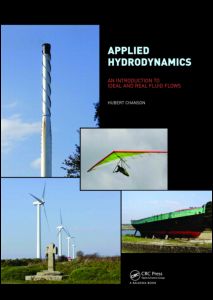
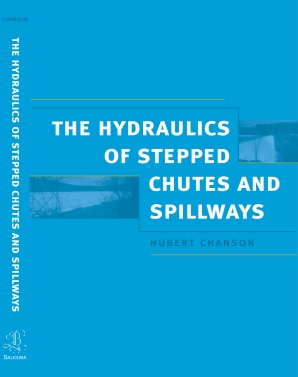
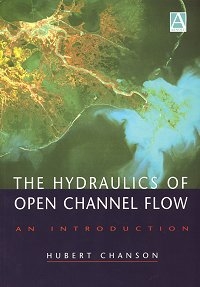

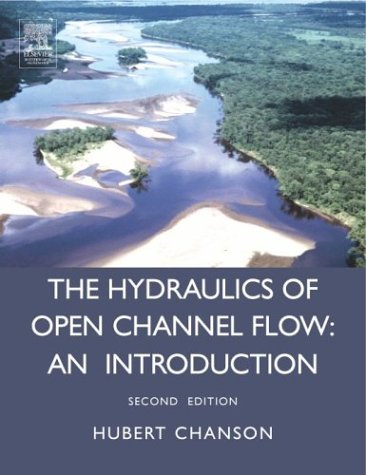


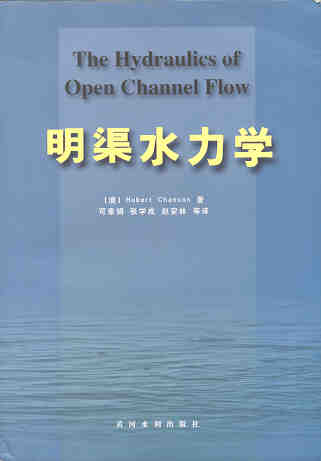
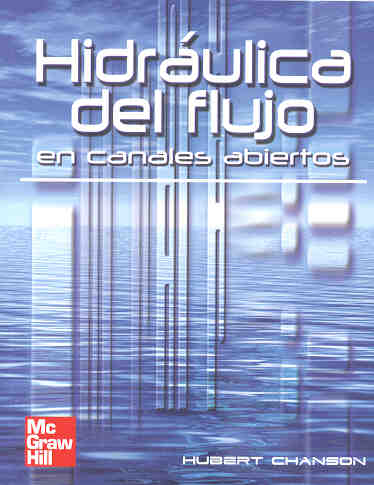
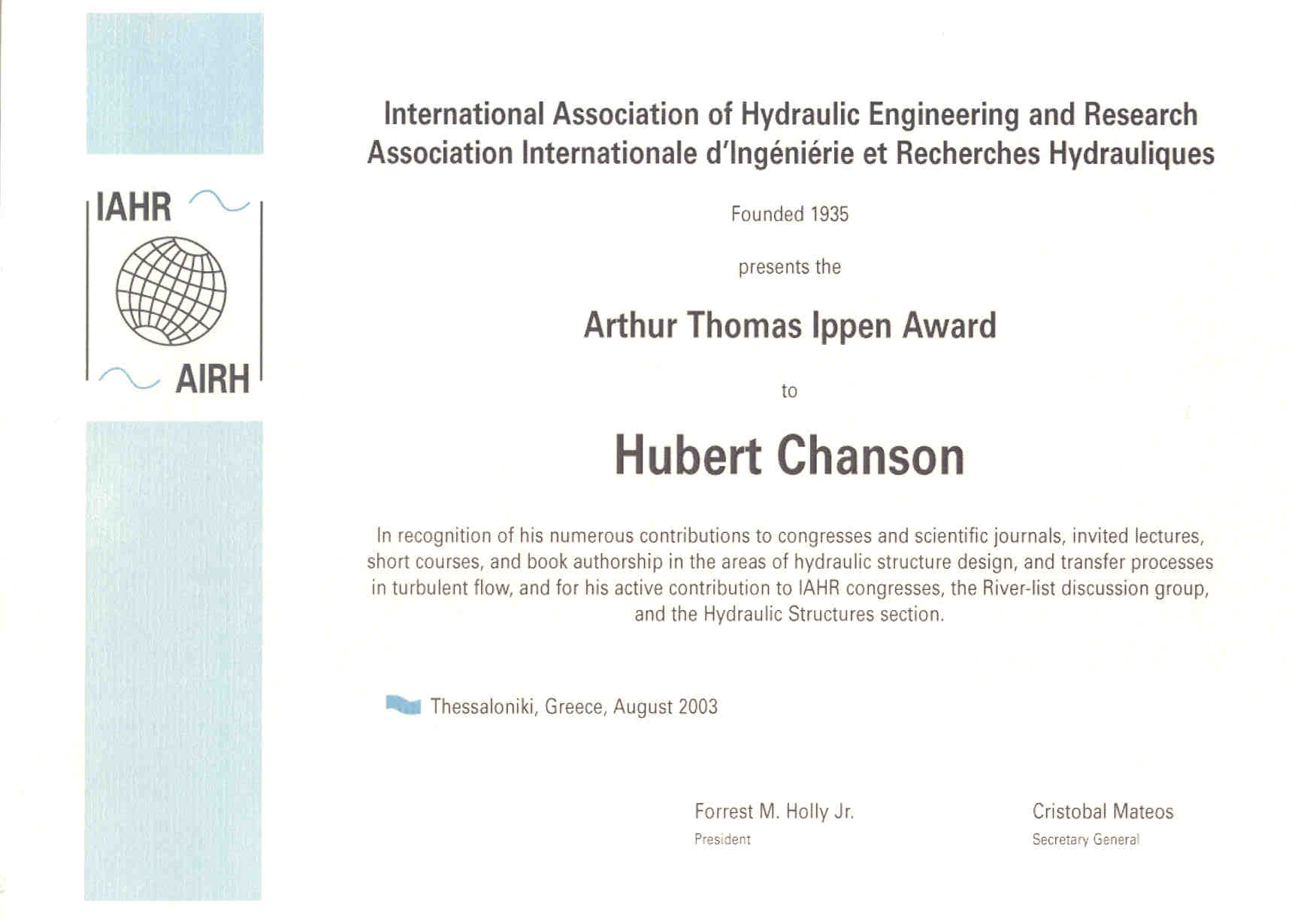

 Several
Australian dams failed slowly because of reservoir siltation, although
the authorities do not acknowledge it. The writer investigated
reservoir
siltation cases (e.g. CHANSON 1998, CHANSON and
JAMES
1998a,b). Between 1890 and 1960, numerous dams became fully-silted,
mostly in New South Wale (Fig. 1 and 2).
Koorawatha
dam (Fig. 1) was the second arch dam built
at
the same site. Both structures became fully-silted by bed-load
material.
The siltation of Cunningham Creek dam (Fig. 2)
was well-documented by HELLSTRÖM (1941)
(suspension sedimentation predominantly). Some reservoirs became
fully-silted
in less than 20 years, and their failure affected the local
economy.
A list of over 30 rapid reservoir siltation events was compiled (CHANSON
and JAMES 1998b). It includes town water supply reservoirs (e.g.
Moore
Creek dam), railway dams (e.g. Gap weir) and mining reservoirs (e.g.
Junction
Reefs).
Several
Australian dams failed slowly because of reservoir siltation, although
the authorities do not acknowledge it. The writer investigated
reservoir
siltation cases (e.g. CHANSON 1998, CHANSON and
JAMES
1998a,b). Between 1890 and 1960, numerous dams became fully-silted,
mostly in New South Wale (Fig. 1 and 2).
Koorawatha
dam (Fig. 1) was the second arch dam built
at
the same site. Both structures became fully-silted by bed-load
material.
The siltation of Cunningham Creek dam (Fig. 2)
was well-documented by HELLSTRÖM (1941)
(suspension sedimentation predominantly). Some reservoirs became
fully-silted
in less than 20 years, and their failure affected the local
economy.
A list of over 30 rapid reservoir siltation events was compiled (CHANSON
and JAMES 1998b). It includes town water supply reservoirs (e.g.
Moore
Creek dam), railway dams (e.g. Gap weir) and mining reservoirs (e.g.
Junction
Reefs).
 Internet
links
Internet
links









